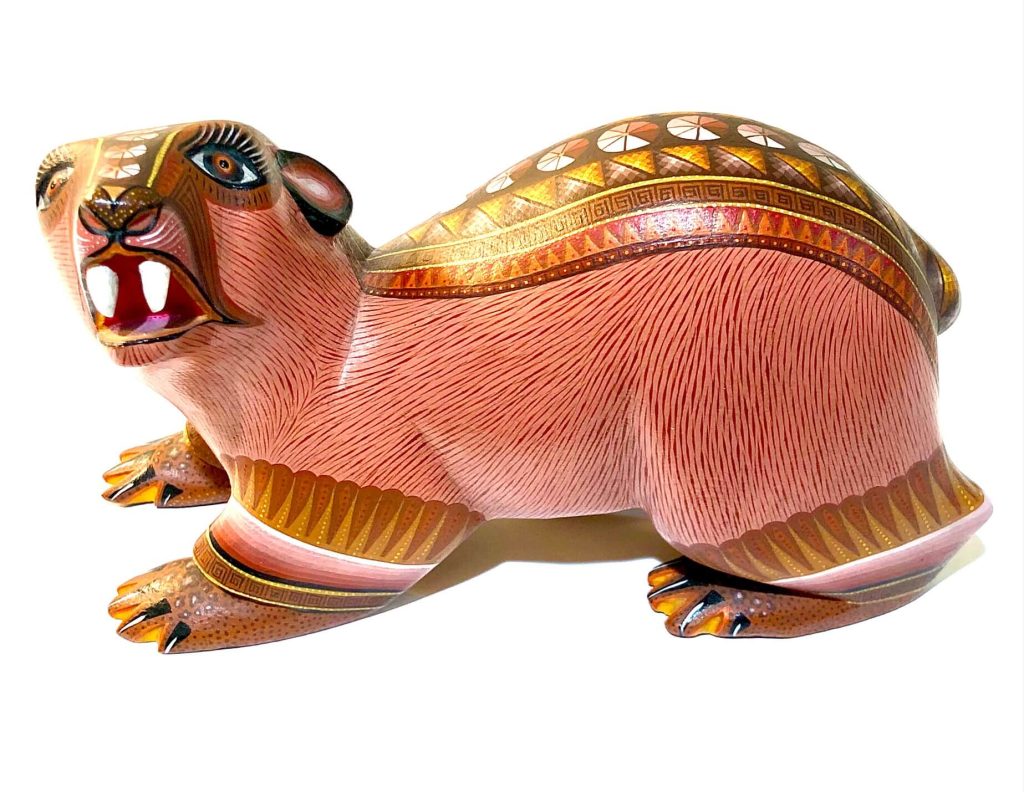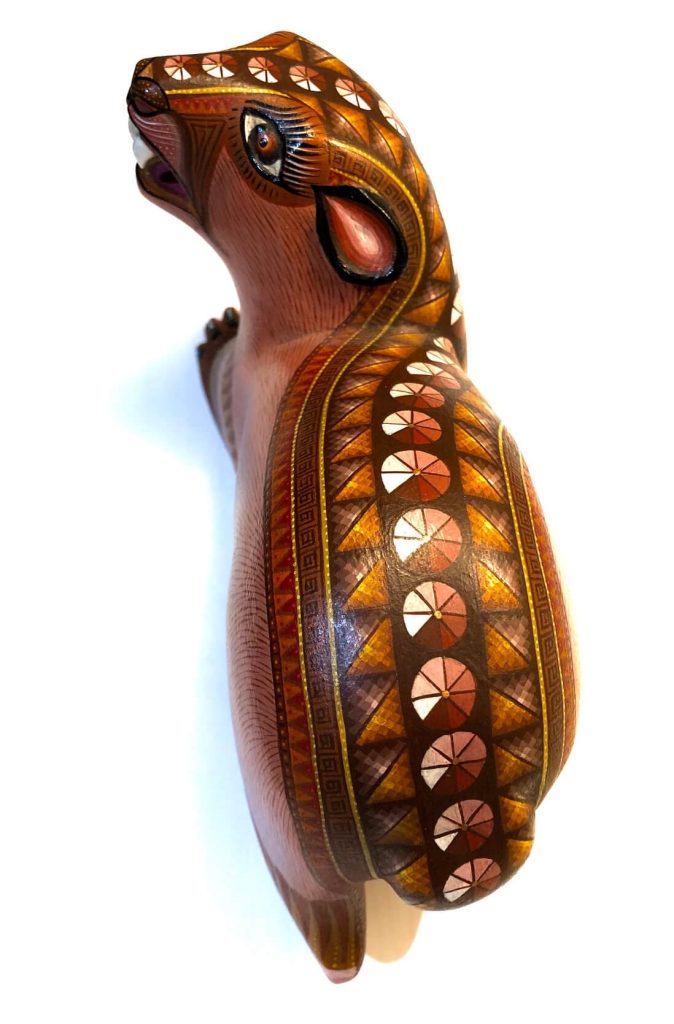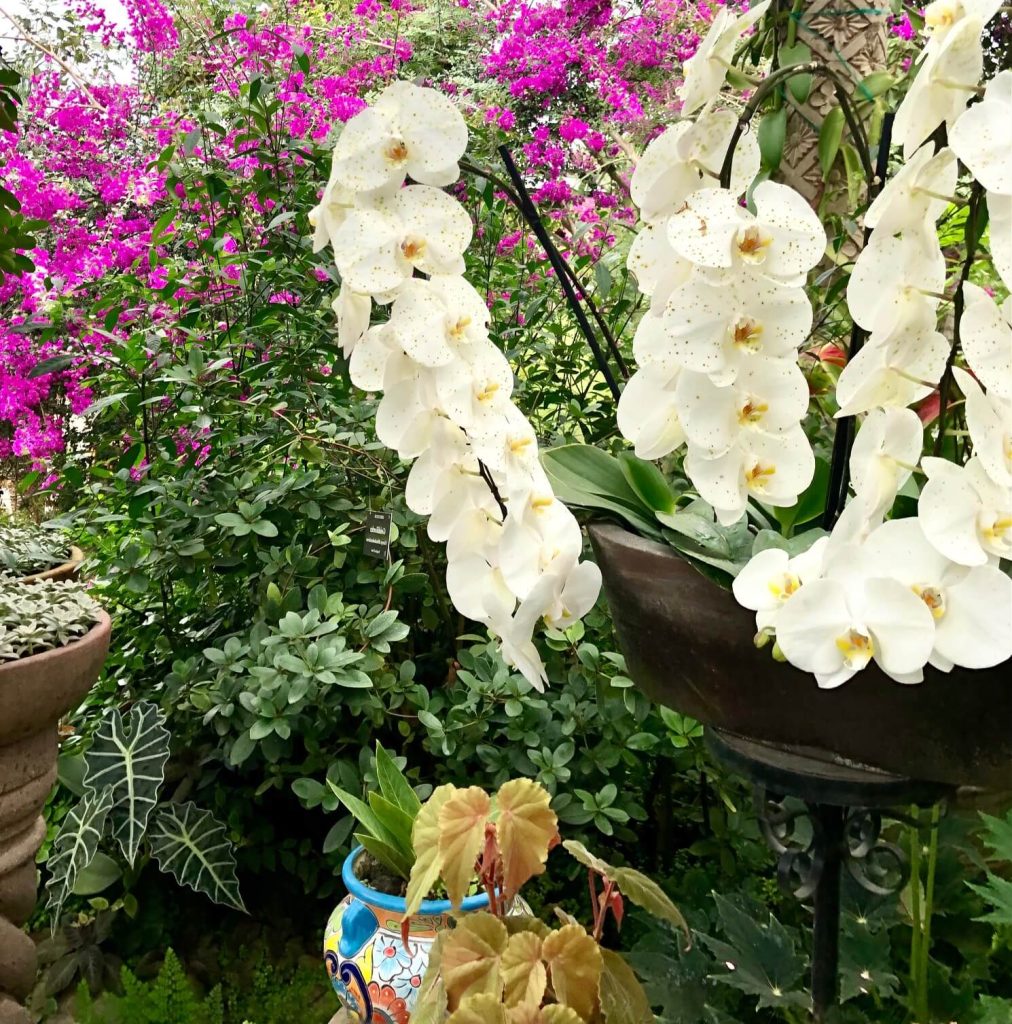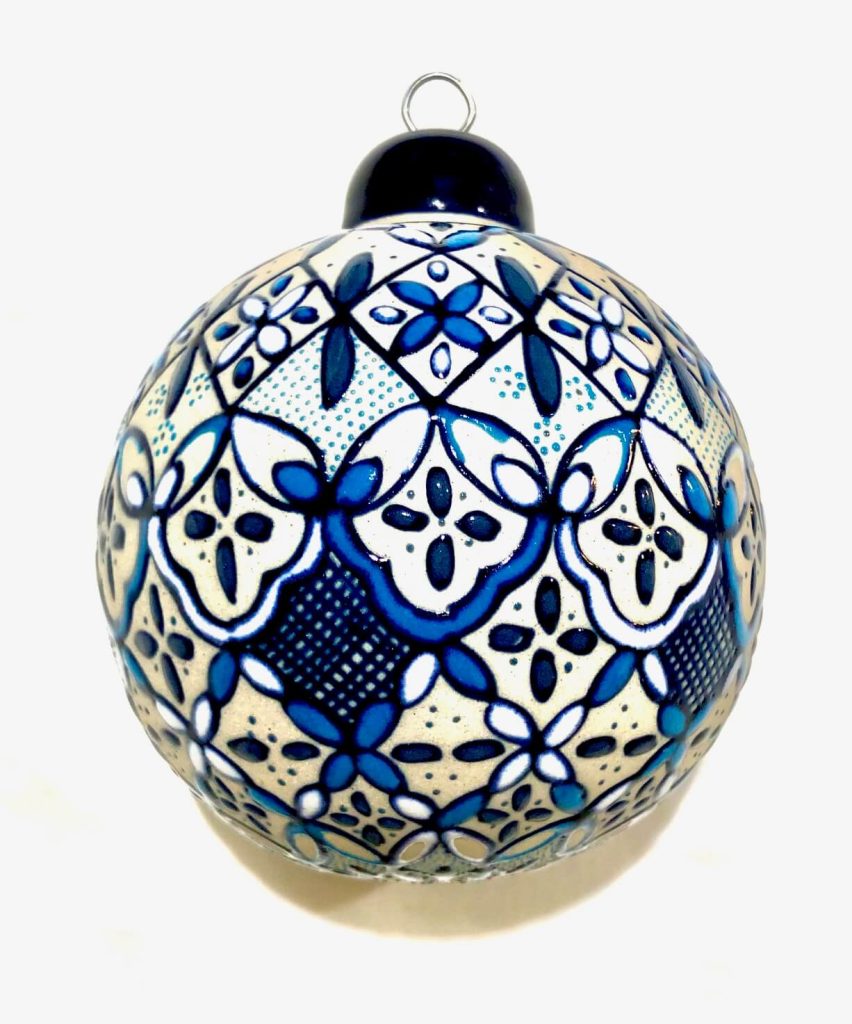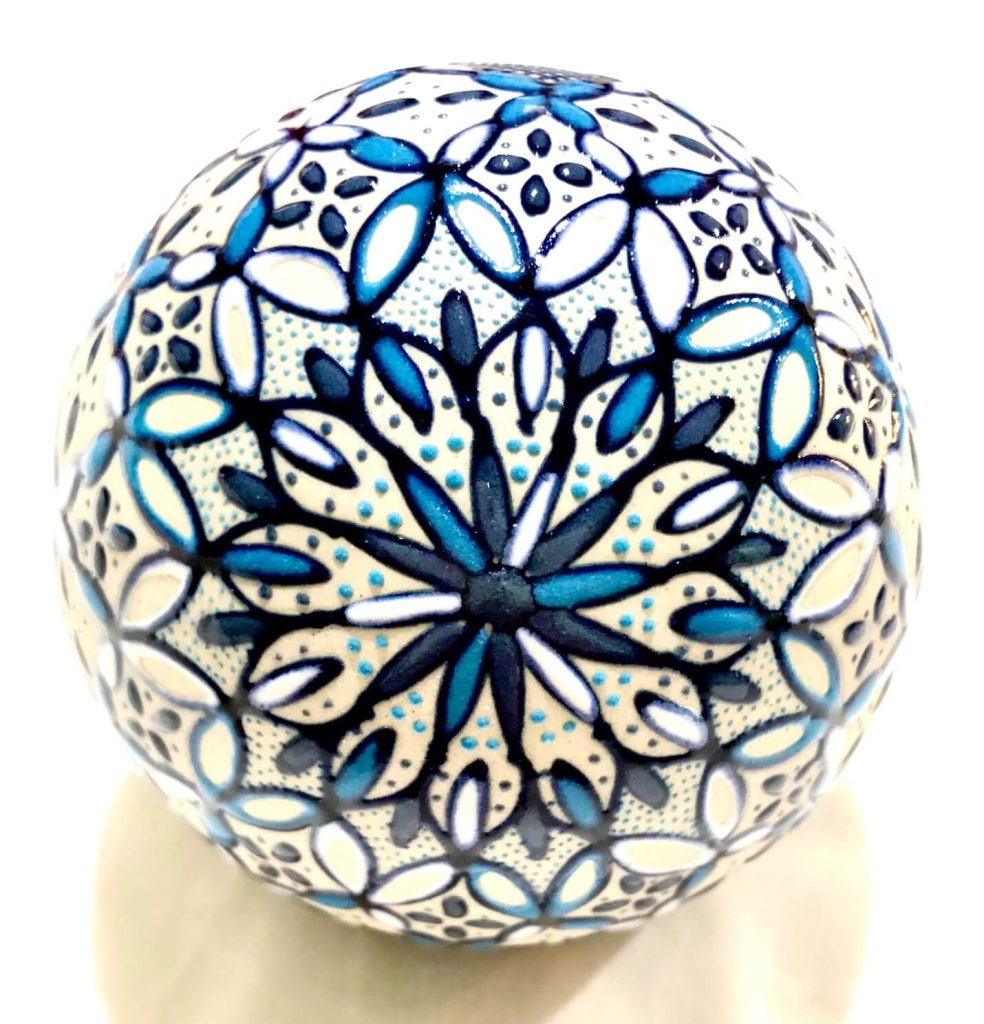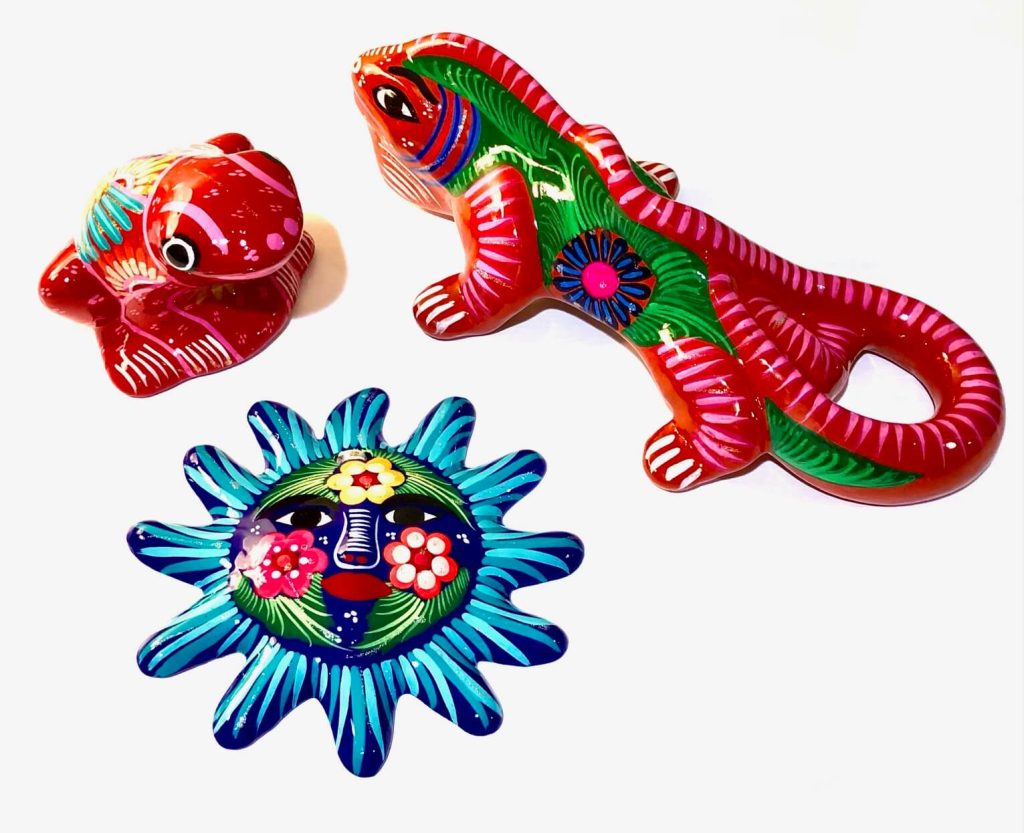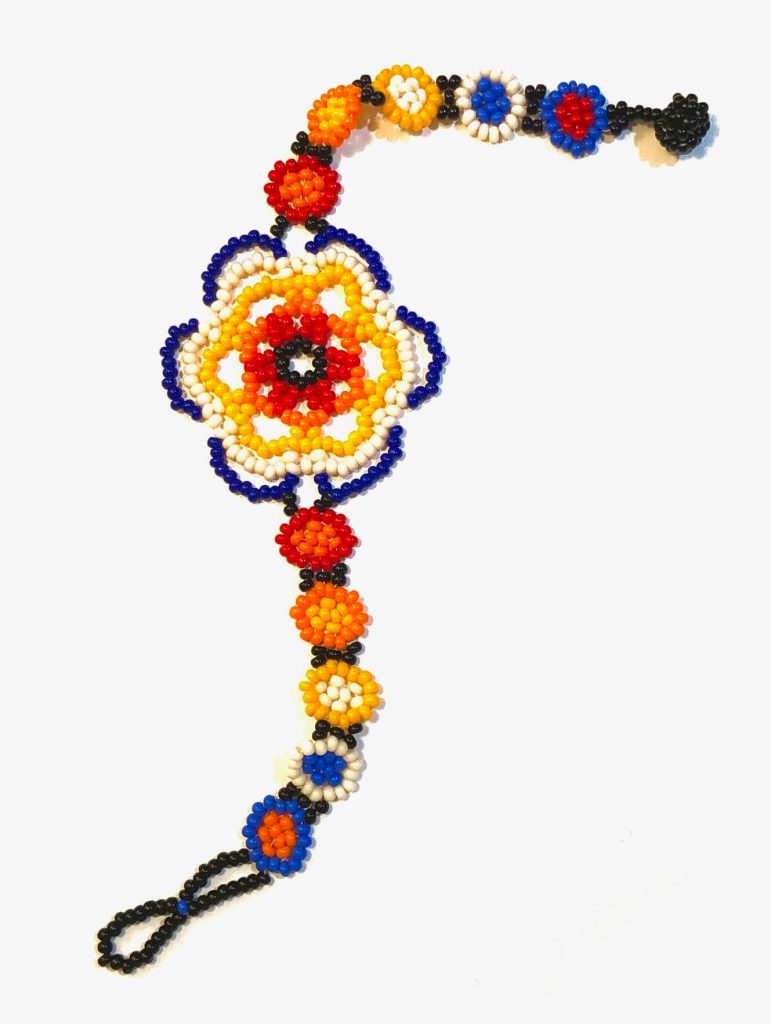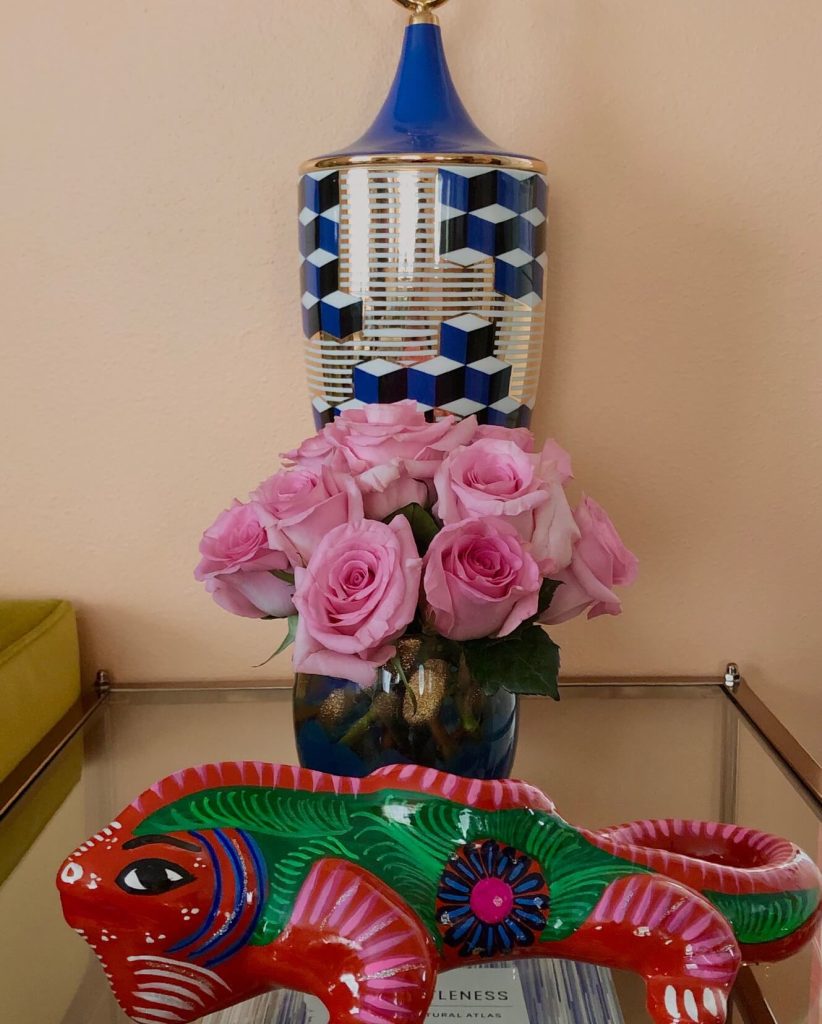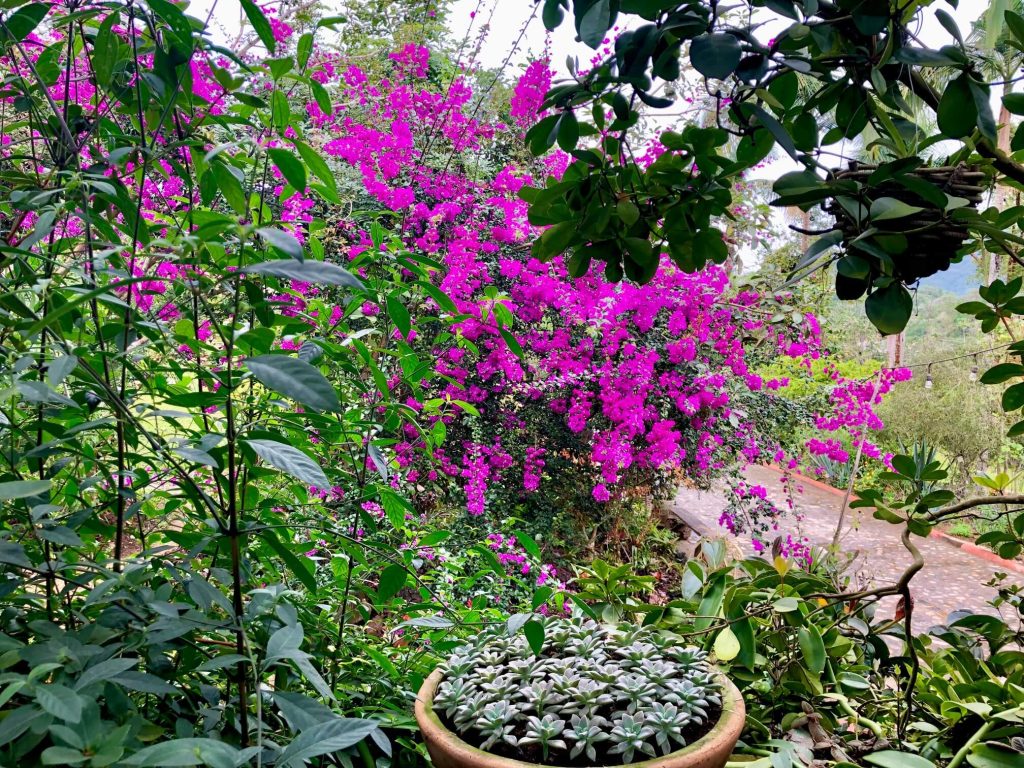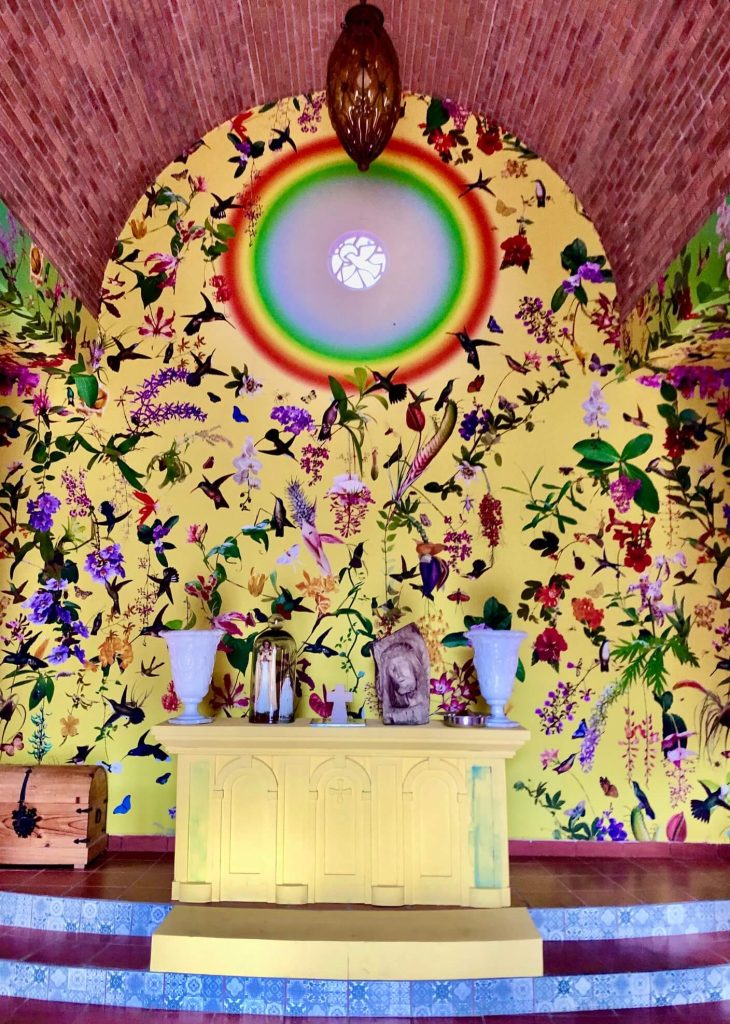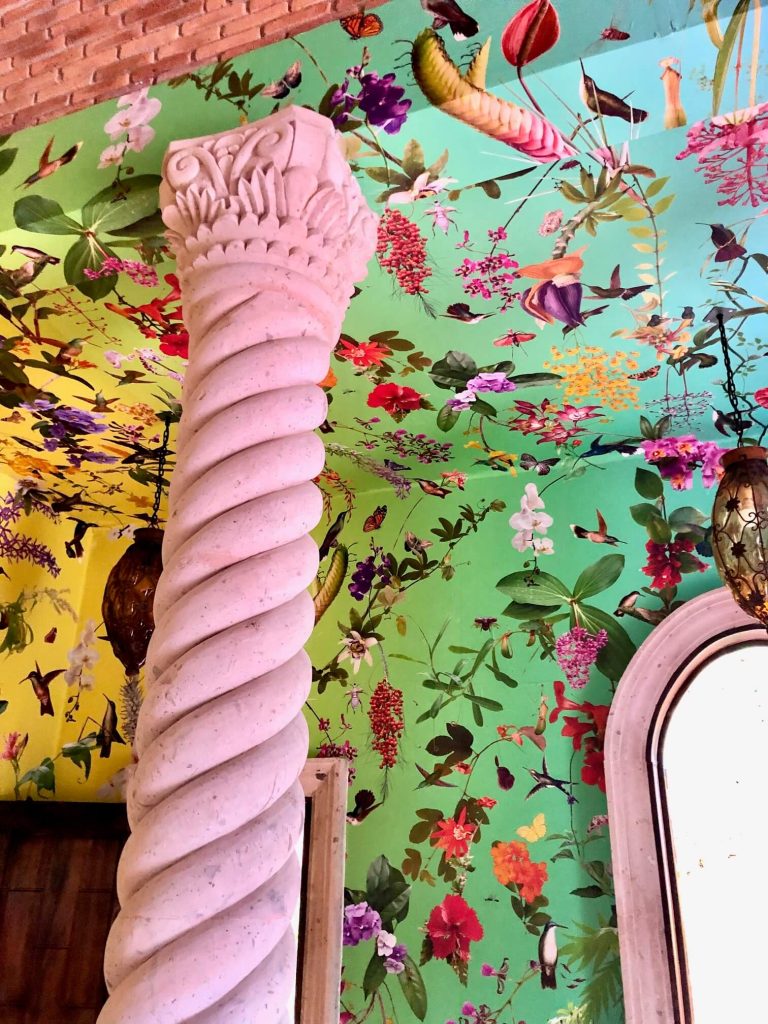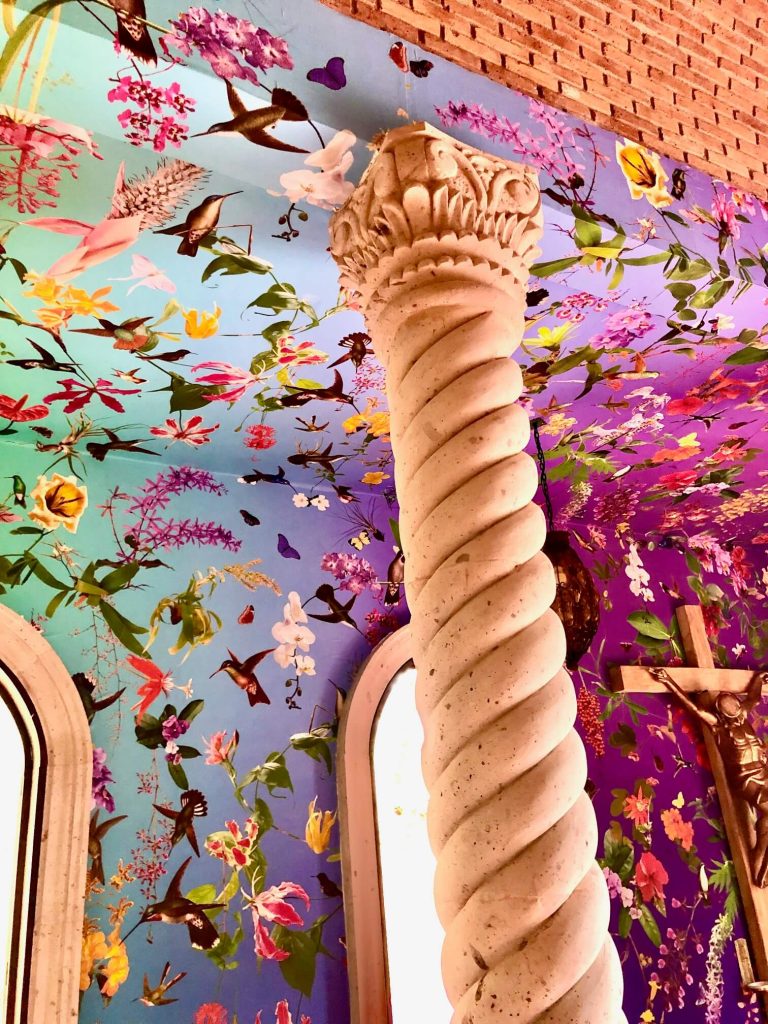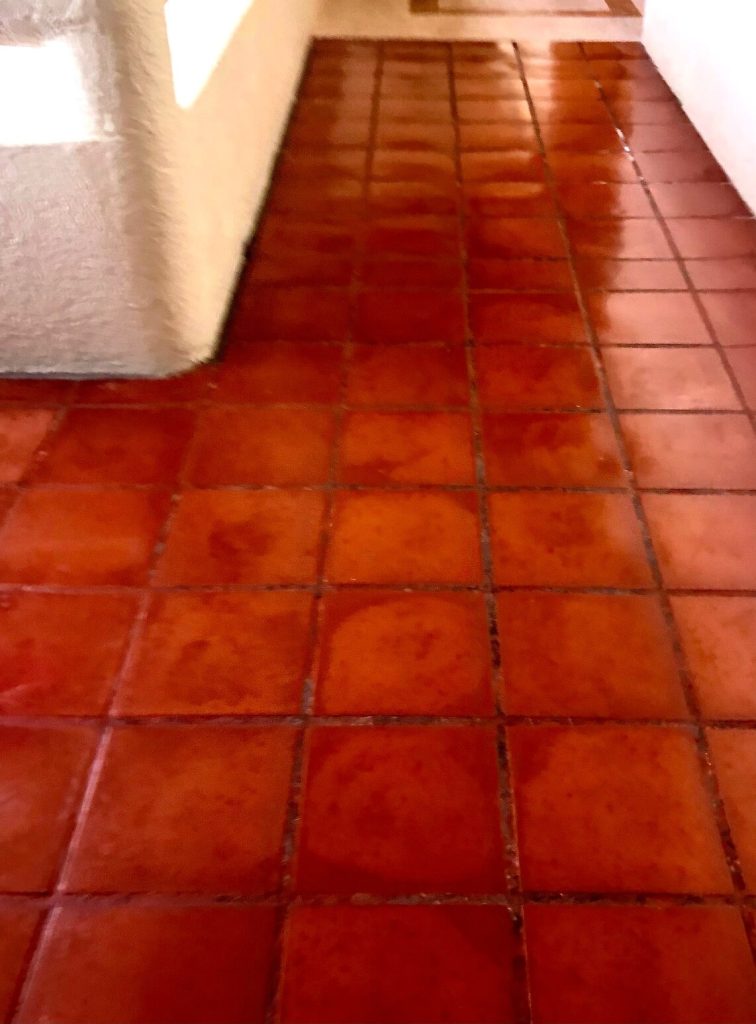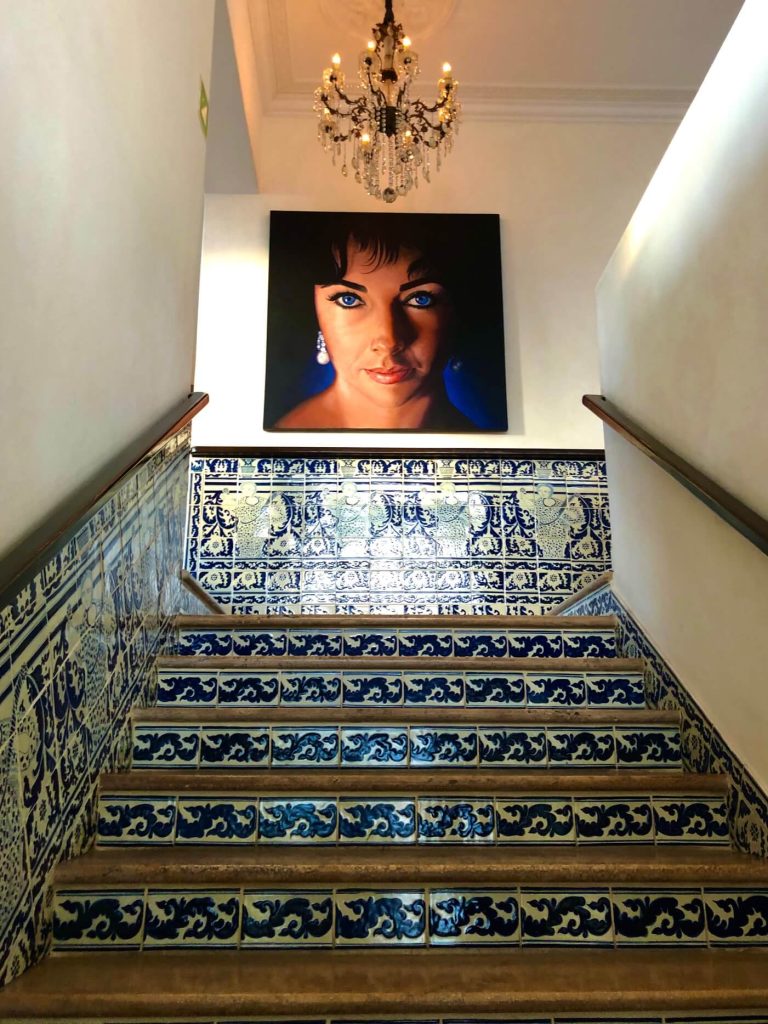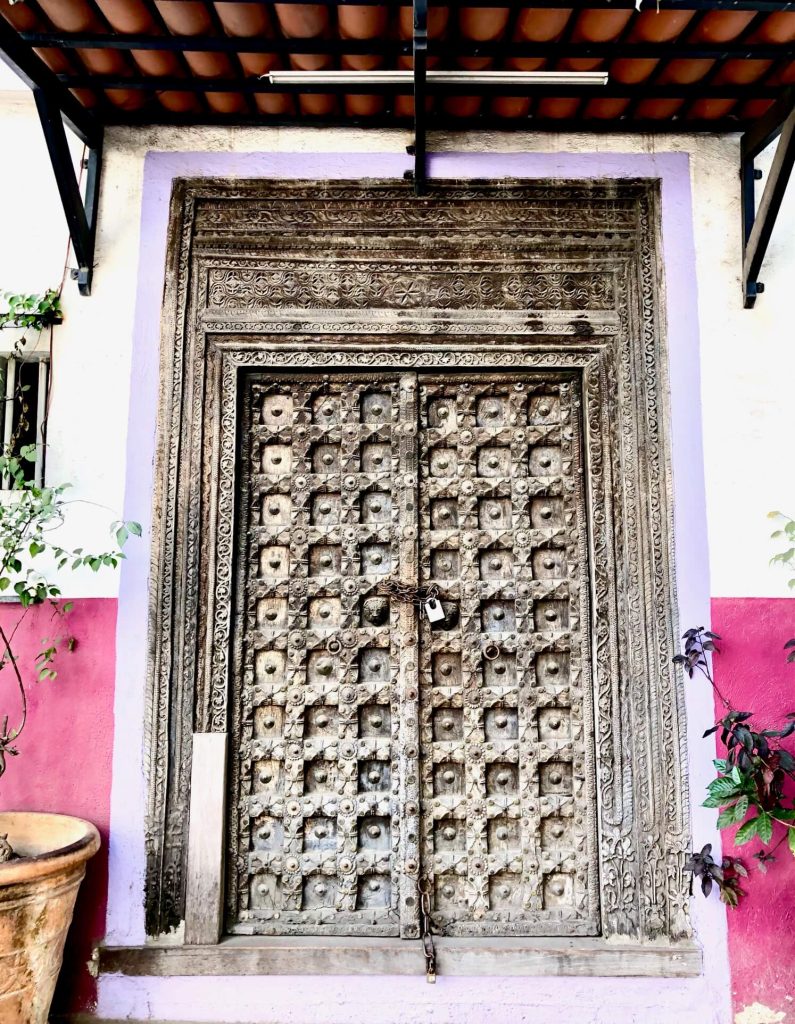I have just returned from a wonderful trip to Puerto Vallarta–the resort city on the Bahía de Banderas in Mexico’s Jalisco state–to celebrate my 6-year wedding anniversary and escape the cold and clouds of Seattle.
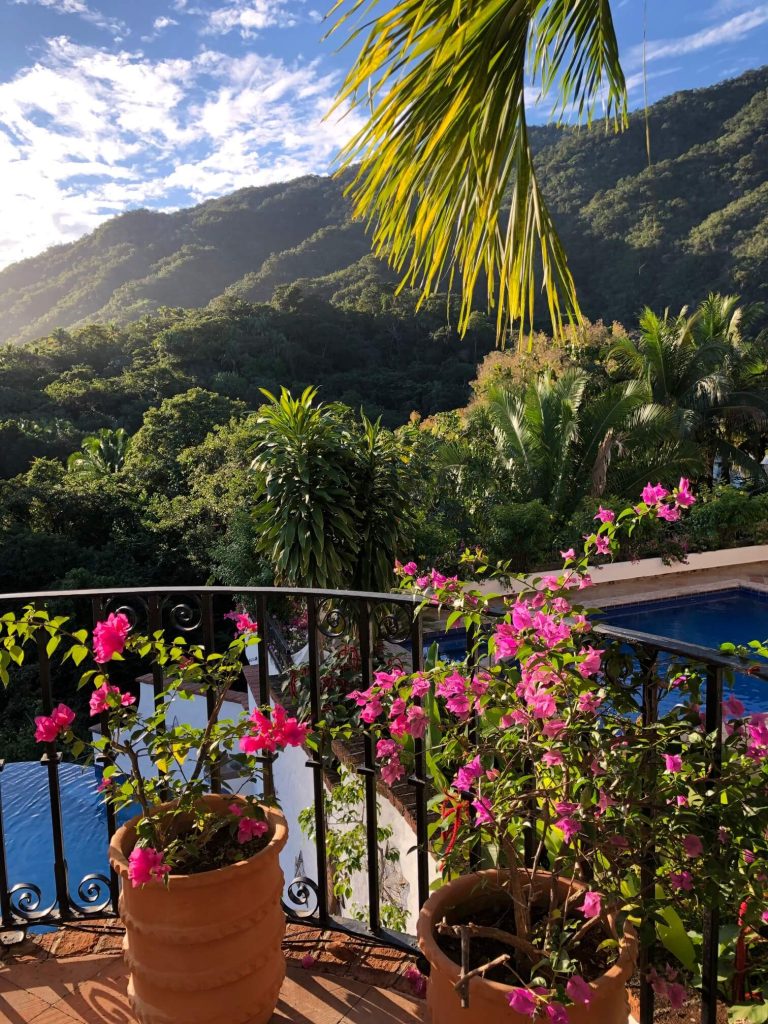
It was my second visit to this city, which my husband and I had originally chosen as a destination due to its tropical climate (it lies within the Tropic of Cancer at roughly the same latitude as Hawaii), LGBT friendliness, and more relaxed vibe than other tourist-heavy coastal destinations in Mexico like Los Cabos or the Riviera Maya.
In fact, Puerto Vallarta can be distinguished from other resort destinations like Cabo San Lucas and Cancún due to the fact that it was already a thriving settlement in the 19th century long before it became a tourist destination. Thus, it offers a more authentic and immersive Mexican experience than the more commercial and Americanized Cabo or Cancún.
While I had a general idea of what could be expected on my first visit, I was pleasantly surprised at how much more enchanting and romantic the area is truly. The warm sun, blue water, and mountainous jungle backdrop are truly breathtaking! My husband and I enjoyed it so much we went back again this year and hope to return again, soon.
Inspiracion
I was truly on vacation while in Puerto Vallarta, so I was not even answering emails. Yet as an interior designer, I could not turn off the creative engines that are constantly running in my head. I found Mexico to be an inspiring place full of color and culture!
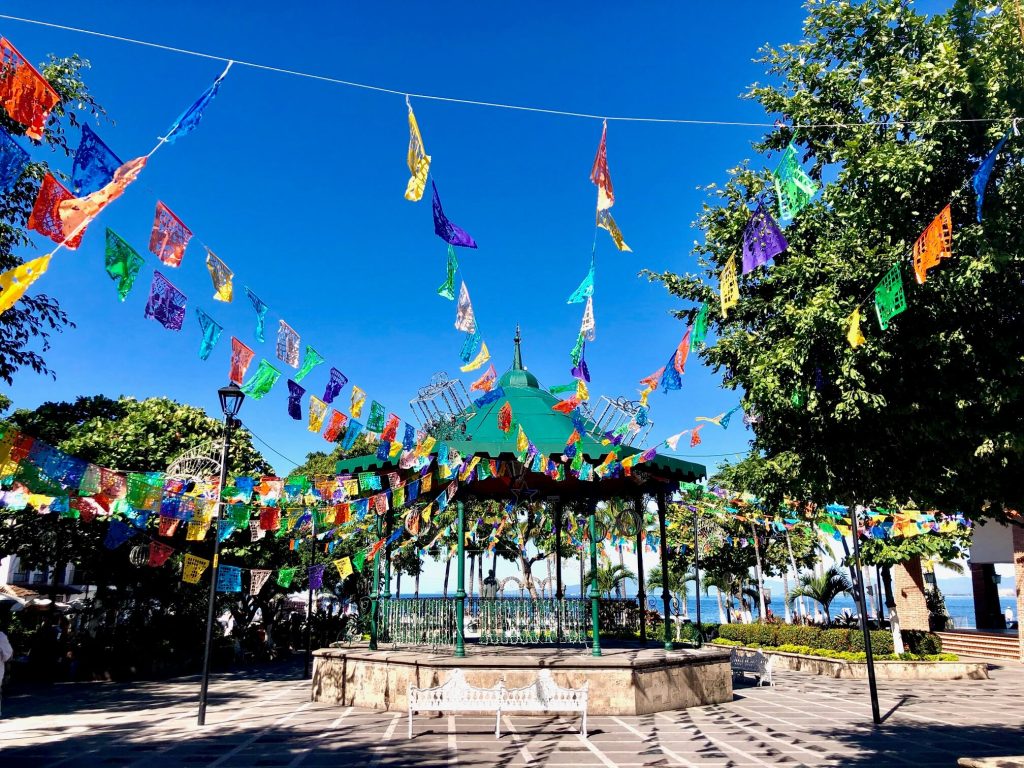
Of course, being Mexican-American I am no stranger to Mexican culture—but there is genuinely a difference between knowing and experiencing. Even with my links to la madre patria, I am still a foreigner in Mexico. As the title of the 1988 film featuring María Elena Velasco’s la India María character states, no soy “Ni De Aqui, Ni De Alla.”
I find that my liminal cultural status gives me a unique perspective in appreciating Mexico. I not only speak the official language (Spanish) more or less, but also comprehend the visual language.
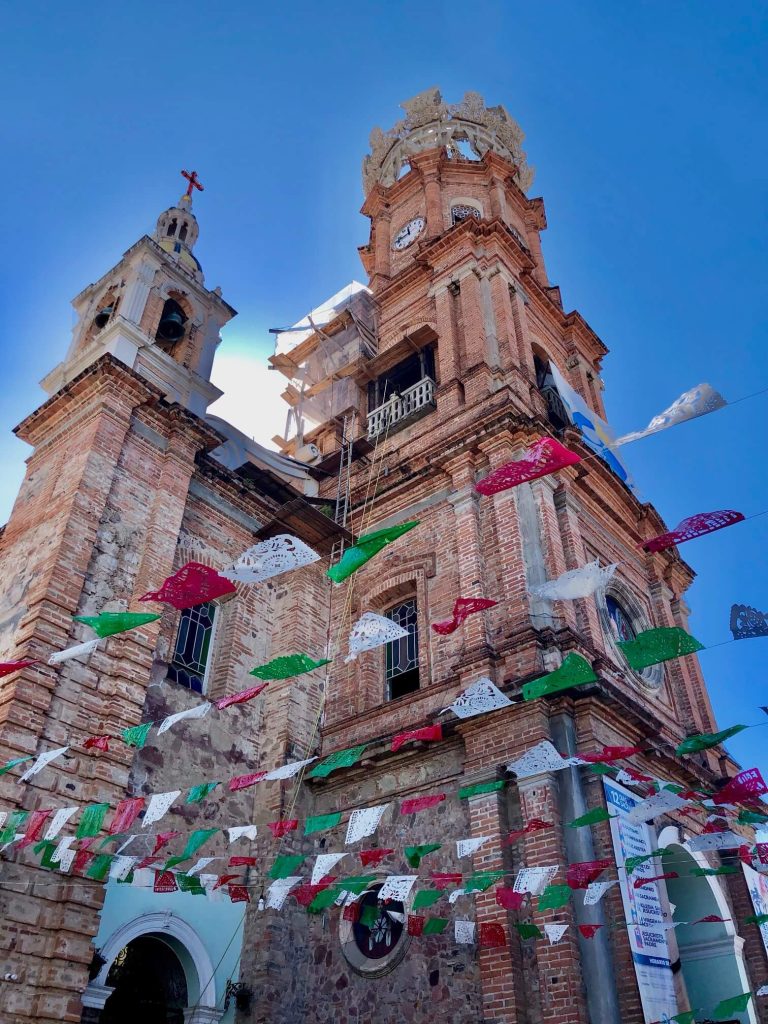
Mexico is a place of many contrasts, and Puerto Vallarta is no exception. The lack of central planning gives a slapdash look to the city and nearby towns, which may affront American sensibilities acclimated to neatly-laid-out spaces and zoning. As in the rest of the country, there is a tremendous amount of poverty (no doubt spurred by corporate and political corruption). On the other hand, the coastal areas and hillsides are studded with beautiful mansions and villas catering to the wealthy. There is also a juxtaposition of rural and urban values mingling even in the center of town—pecking hens are not an uncommon sight at local bus stops, for example.
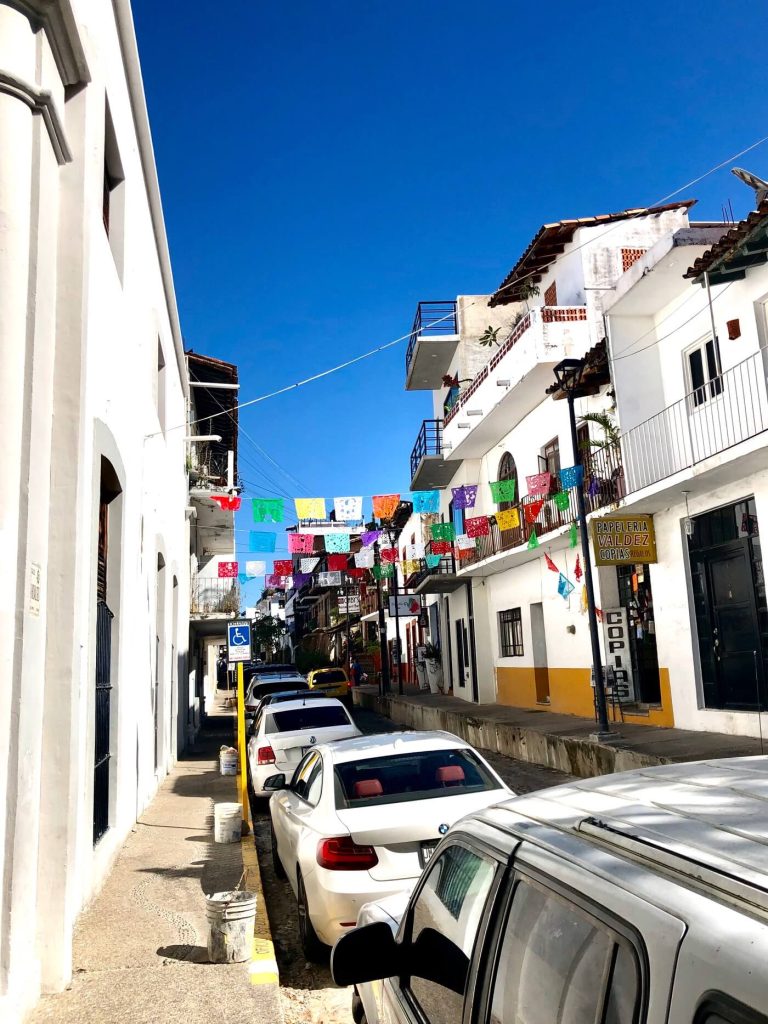
And yet, the visual cacophony does not detract from the immense visual beauty! From the azure waters of Banderas bay, to the red clay rooftops of the buildings, to the lush green jungles clinging to the mountainsides, everywhere in Puerto Vallarta color and nature burst forth and define the rhythm of the city.
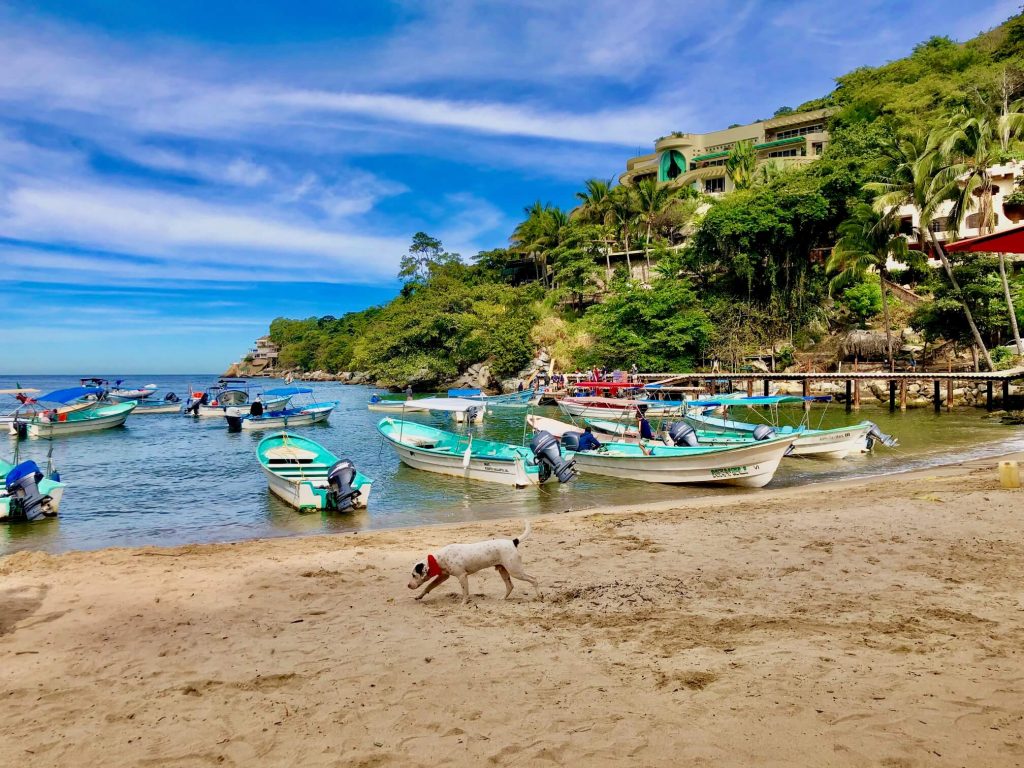
Recuerdos
No international trip is complete without obtaining souvenirs. Naturally, I had to acquire my own to decorate my home and remind me of the wonderful time spent in a beautiful place with the person i love!
Now, the state of Jalisco where Puerto Vallarta is located is renowned for the art created by the local Huichol indigenous people who inhabit the Sierra Madre Occidental mountains. This artwork includes beautiful yarn “paintings” as well as vibrantly-beaded sculptures.
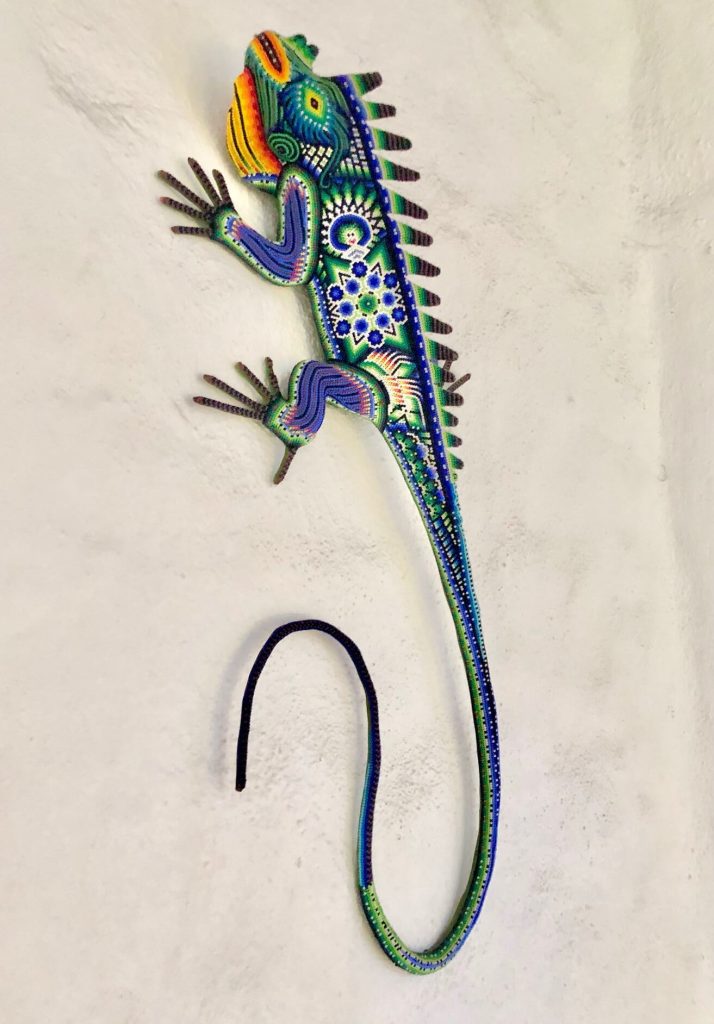
In the past, such sculptures were beaded with seeds, pebbles, shells, and other natural objects. However, since the mid-20th century, glass and plastic beads have become the norm due to their ready availability. As a result, the sculptures have taken on much more saturated, energetic palettes and designs.

I had already obtained the jaguar mask above on my last visit (the endangered jaguar has long been a cultural emblem in Mexico, and it still clings to existence in the Sierra Madre Occidental despite constant environmental assaults from luxury resort developers and rural communities). This time, I wanted to expand my horizons a little bit with some new styles of Mexican artesanías. Thankfully, Mexico has artisans all over the country working in various media to produce beautiful artwork and handicrafts. These can be obtained from vendors and fine galleries, including in Puerto Vallarta, or from artisans directly.
This time, I got the following items:
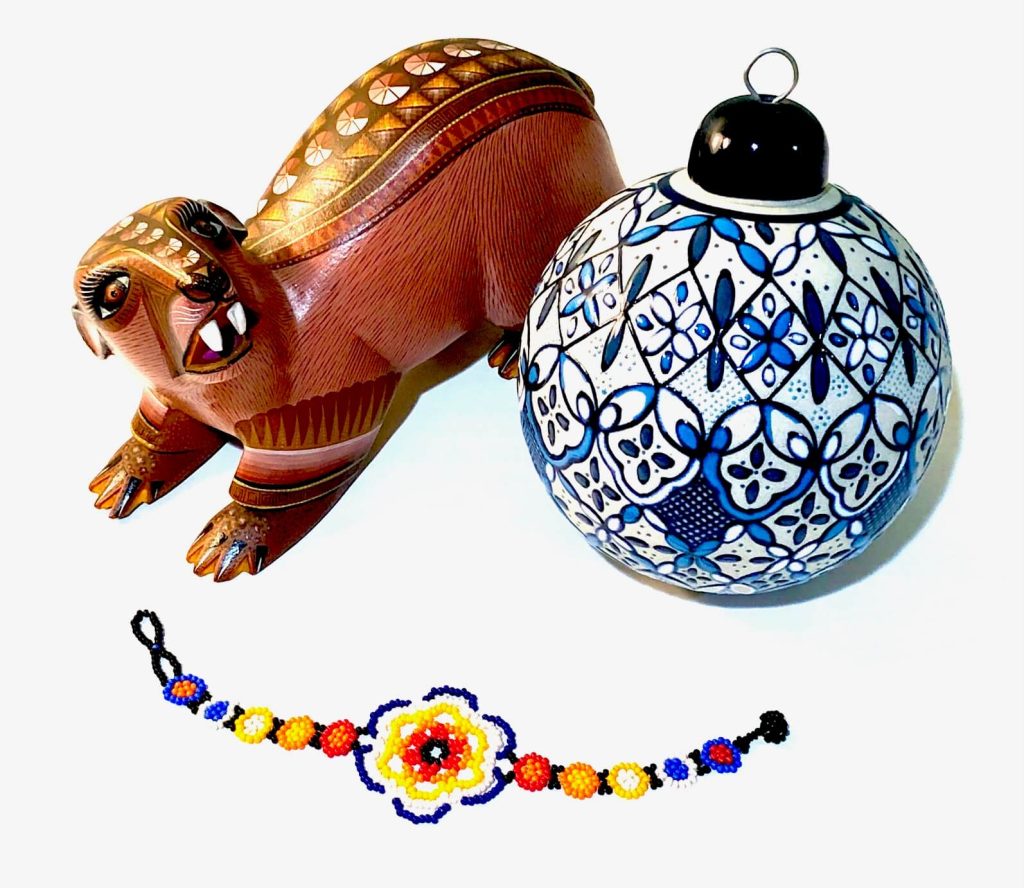
Alebrije
Alebrijes have become popular Mexican handicrafts in the past 25 years, and especially after the release of Disney’s “Coco.” They come in a variety of sizes and colors (some rather electric) and represent all kinds of creatures–real and imagined.
They are the brainchild of Mexican artist Pedro Linares, who once in the 1930s had a fever dream in which he was surrounded by strange, fantastic, brightly-colored animals chanting the non-existent word “alebrije.” Upon waking, Linares had the idea to recreate these creatures in papier mache, and the alebrije was born. In the late 1980s, through artistic dissemination, Oaxacan artisans began creating alebrijes of their own using wood from the local copal tree (Bursera glabrifolia). Now, these are the most common alebrijes sold on the market.
The alebrije I purchased is more subdued, with its mahogany browns, golds, and beiges. I saw it and was intrigued by its inexplicable character. Alebrijes are these days often crafted to represent real, as opposed to imagined, animals. However, I am not really sure what mine is supposed to be. At first, I thought an American badger but that doesn’t seem quite right. The salesperson thought it could be a bear… I think the most likely, at least as it appears to me, is a hyrax.
Regardless of what it is, I adore it! It has beautiful geometric patterns running along its back that recall Aztec designs, as well as a sort of Chinese meander/Greek key. The colors remind me of western desert canyons at sunset.
Ceramica
Mexico is also widely known for its fine ceramics. From Jalisco’s indigenous Tonalá pottery, to the Spanish-origin Talavera from Puebla, there is no dearth of ceramic arts in Mexico.
For 2021, I was finally able to convince my husband of getting a Christmas tree, but due to its late arrival we did not decorate it with anything but the lights and a few meager ornaments. Christmas tree decorating really requires a concerted effort, and I wanted to have ornaments and decor that spoke of both my Mexican heritage as well as my husband’s Southern and Scottish heritage. I just didn’t have time last year to pull it off. Thankfully, I now have a whole year to carefully acquire the right ornaments, like this large porcelain bauble from the studio of Mexican artist Javier Servin. Isn’t it marvelous?
As we know, blue-and-white glazed pottery is a persistent decorating favorite, but Servin’s ceramics are truly spectacular! The glazing is actually an intricate, raised spirographic pattern executed on a plain bisque ground. The raised glaze gives a texture you can feel, as opposed to what we usually see with flat-glazed majolica. It looks like a beautiful lace of glaze covering the ceramic body. Magnificent! I cannot wait to use it on my Christmas tree!
Don’t forget, the airport can also be a great place to get last-minute souvenirs duty-free. That’s where I found these painted terracotta friends below.
Aren’t they fun? I already had the iguana from my previous trip, but I added a cute little frog and the most radiant blue sun. They are made in the Mexican state of Morelos and painted with electric colors and a dusting of glitter. So cheerful!
Joyeria
I love jewelry, although I don’t wear it as often as I could. Nevertheless, I love to obtain interesting pieces of jewelry for my collection.
Mexico is an epicenter for jewelry making, particularly silver from Taxco in Guerrero. Closer to Puerto Vallarta are the gold, silver, and opal mines of the Sierra Madre Occidental, which played a large part in the development of the city.
I did purchase some stunning sterling silver pieces while in Puerto Vallarta, but also the spirited beaded bracelet above that was made by a local artisan. The saturated, sunny colors make me smile while wearing it, of course, but it also looks great laid out casually on a coffee or side table, which means it can do double duty as decor!
The abundance of artisans practicing their craft in Mexico means that a lot of beautiful artisanal objects can be found almost on every corner. The souvenirs I show above are just a fractional sampling of the artistic bounty to be discovered. I love buying pieces that bring warmth and meaning into my decor and recall wonderful memories of my travels. However, as with shopping in any tourist destination, be careful when buying souvenirs, as an influx of cheap Chinese imports have flooded the markets in more touristed areas. If you do not speak Spanish, it may be best to stick to purchasing at galleries. Gallery salespeople, who often speak English, are also a great resource for recommendations to other reputable vendors.
Casa a la Mexicana
My trip to Mexico was positively inspiring, but inspiration is meaningless unless it can be harnessed for creation. Thankfully, the exuberant Mexican spirit lends itself well to interior decoration.
I am not sure if it is the abundant sunshine, the blending of indigenous and Hispanic cultures, or more relaxed lifestyles (working to live rather than living to work), but Mexican interiors are much more vigorous and vital than what we see in the United States. Our all-white, beige, and grey interiors seem bland and listless by comparison.
Mexico is a land of color. Bright, rich, saturated, unapologetic color. But as they say, no le tengas miedo al chile, aunque le veas colorado. Color is the spice of life.
One of the most common colors one sees in Mexico is pink. It is the color of the bougainvillea shrubs that line the villas, and the orchids that grow in the jungles. But if you want to use pink in your interiors a la Mexicana, don’t settle for timid baby pink or rose quartz. Instead, think hot pink, fuchsia, bubblegum pink. For example, I stumbled upon the chapel below at the Puerto Vallarta botanical garden, which was washed in this stunning pink, reminiscent of strawberry atole.
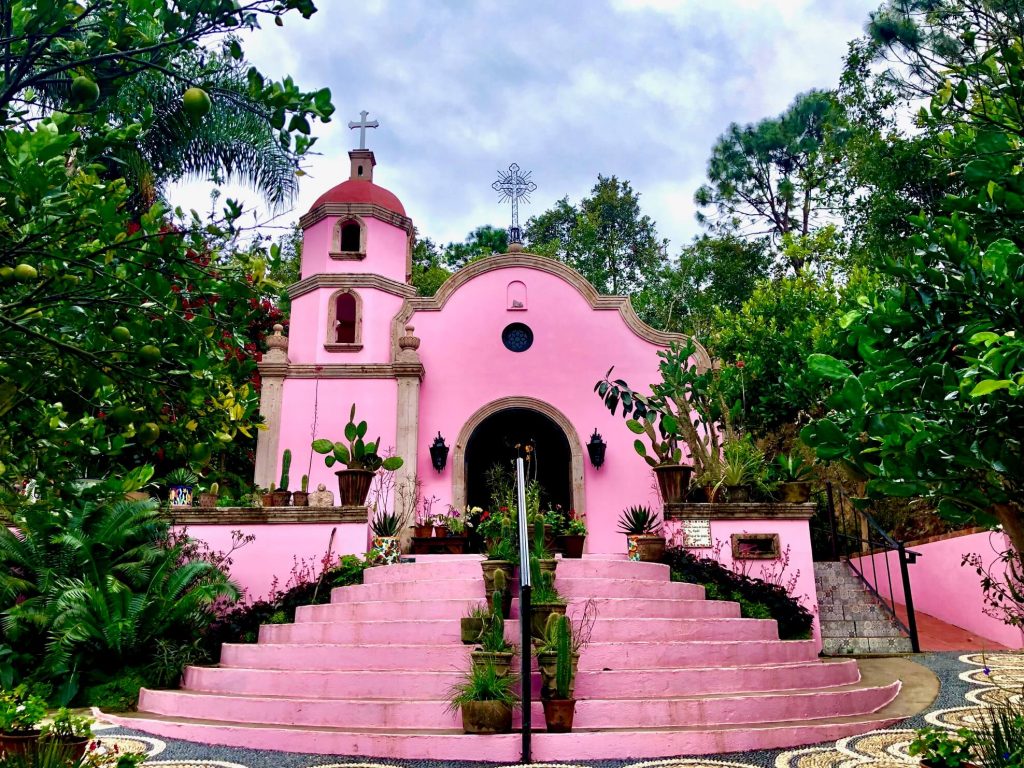
The interior of the chapel is no less stunning and colorful. Inside, we find walls covered in a custom wallcovering of rainbow gradient featuring images of flowers, insects, and hummingbirds either photographed in the garden over the course of a year or borrowed from Mexican ornithologist Rafael Montes de Oca and natural history illustrator John Gould. The wallcovering is a permanent art installation, called Los Angelitos de Nuestra Señora del Jardin, by artists David Allen Burns and Austin Young as part of their “Fallen Fruit” art initiative. No subtlety here.
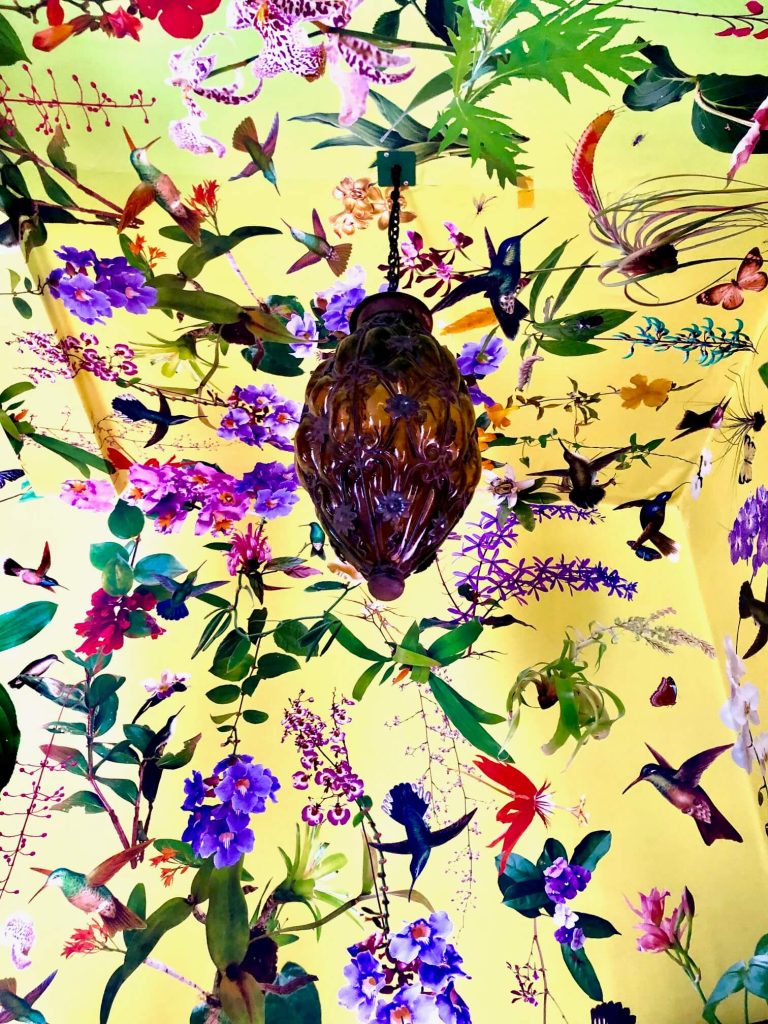
The floors of the chapel above were covered in terracotta tiles, as is common in Mexican houses and buildings. The fiery tones of the floor tiles create warmth, despite the hard surface. It’s a cost-effective way to bring the Mexican aesthetic indoors.
Speaking of tiles, another common element used in Mexican interiors are decorated tiles. There are many kinds, from the bright, polychrome Talavera tiles to more minimal designs. One of my favorites are the azulejo tiles, which provide drama when installed in large groupings. They are used to great effect at the Casa Kimberly hotel in Puerto Vallarta, former home of Elizabeth Taylor. Below, the stair risers and dado are adorned with the blue and white azulejo tiles, which bring out the blues of Liz Taylor’s eyes in the painting hung above the landing.
Rustic wood is also a common element in Mexican interiors. Exposed wood posts and beams can be seen in many homes. Carved wooden furniture, such as beds and armoires, are also prevalent, many featuring wrought-iron hardware. The image below shows a rustic front door of carved wood with iron hardware and also shows the pink and terracotta elements discussed above.
Puerto Vallarta, and Mexico generally, is truly a wonderful place full of romance and enchantment. For those seeking an alternative to the banal interiors so common today, Mexico offers an excess of inspiration. Creating a Mexican experience in your own home is not difficult–just let the sun, sand, surf, and scenery of Puerto Vallarta show you the way. And remember, I am always here to help!



